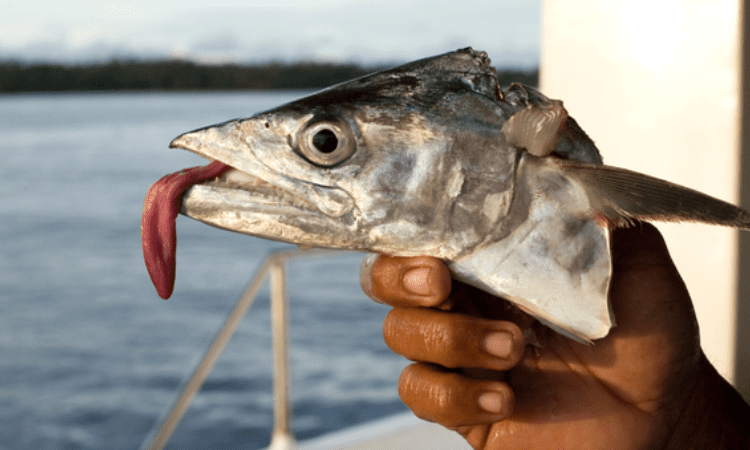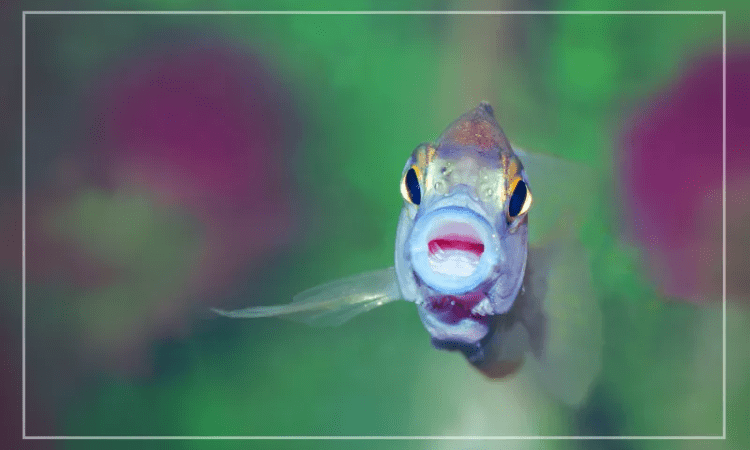Do Fish Really Have A Long Tongue?: Is the origin of an animal’s unique trait ever a mystery to you? We find fascinating the unique traits shared by all living things, from the tiniest insects to the largest elephants. Questions like, “Do fish have a long tongue?” are common. To determine whether or not this peculiar idea is true, we shall delve into the fascinating subject of fish anatomy.
Table of Contents
Familiarity with Fish Anatomy:
Let’s start by delving into the intricate anatomy of fish tongues to unravel their mystique. Unlike mammals, fish do not have tongues in the traditional sense. Instead, they possess a structure called the basihyal, which is occasionally referred to incorrectly as a “tongue.” At the base of the fish’s mouth is a little, flat bone known as the basihyal.
A Language Distinct From All Others: Basihyal
When compared to the basihyal, the mammalian tongue serves a different purpose. The health of the fish’s gill arches and the efficiency with which water passes over them for respiration depend on it. An integral component of fish anatomy, the basihyal aids in general function, despite its dissimilar appearance to the fat tongues we are accustomed to.
Debunking the Fallacy
Next, we’ll dispel the misconception that fish have long tongues by explaining the basihyal’s role. The fact that the basihyals of certain fish species are longer than average is likely the starting point for the notion. A tongue-like structure can be created by some basihyals due to their length. But you should know that this bone isn’t used for tasting or manipulating food like a mammal’s tongue.
Fish Adaptations:
To thrive in their unique environments, fish have evolved a wide range of adaptations. Variations in basihyal length amongst species are examples of how the natural world adapts to satisfy specific needs. The basihyals of some fish, like angelfish, are longer than those of others. The incredible variety found in the aquatic environment is demonstrated by these adaptations.
The Method By Which Basihyal Operates:
Although it may not look like a tongue at first glance, the basihyal plays a crucial role in a fish’s life. Not only does it aid gill function, but it also makes ingesting and manipulating prey much easier. Understanding the role of the basihyal helps to better comprehend the intricate balance of nature.
Engaging with the Topic:
Now that we know the truth about fish “tongues,” let’s pause and admire the underwater world for what it is. Next time you’re snorkelling or just gazing into an aquarium, try to focus on the intricate structures of the fish. While not technically a tongue, the basihyal adds a fascinating dimension to these captivating creatures.
Solving the Mysteries of the Ocean:
As we delve deeper into the ocean, keep in mind that fish, just like every other living thing, have evolved to adapt to their specific environment. The basihyal, sometimes known as our “fish tongue,” is only one example of the many ingenious adaptations that have evolved throughout millions of years.
Observation and Expression by Fish:
Fish are unique not only in their anatomy but also in the complex sensory adaptations and communication mechanisms they possess. Some animals can convey complex messages to one another by the use of sophisticated visual displays, bright colours, and body language. Some animals use lateral lines and specific sensory organs to move around and detect changes in their surroundings.

A Fascinating Look at the Development of Fish Diversity:
The vast array of sizes, shapes, and behaviours displayed by fish is indicative of the rich diversity in which they inhabit. All living things, from the stealthy anglerfish of the deep sea to the vibrant schools of tropical reef fish, have adapted to live in certain ecological niches. This variety sheds light on the miraculous capabilities of evolution and the incredible adaptability of living things.
A Water Symphony:
Think of the marine ecosystem as a living symphony, where each species plays an important role. Because of their many adaptations, fish contribute to this harmonious aquatic symphony. Everything about the underwater world, from the mesmerising colours of a coral reef to the pulsating movements of a school of fish, awakens our senses and fuels our fascination with the secrets of the deep.
Long-Held Beliefs Replaced:
Our research on fish tongues has shown us that our preconceived notions about the natural world are often wrong. It pushes us to think about, learn about, and appreciate the complexities of life beyond what we normally understand. While not technically a tongue, the basihyal exemplifies the resourceful ways in which the natural world ensures the continued existence and well-being of its inhabitants.
Linking Up with Mother Nature:
After leading such a hectic life, it may be helpful to spend even a short amount of time in nature, such as gazing at fish in an aquarium or a nearby pond. It helps us appreciate biodiversity for what it is and fosters a desire to save these delicate ecosystems.
When you think about the strange creatures in the animal realm, remember that every species contributes to the rich tapestry of life on Earth. That includes fish. No matter how much experience you have as a marine biologist or as a layperson watching, there is always more to discover beneath the surface.
To sum up:
To sum up, the claim that fish have large tongues is slightly inaccurate. Although fish lack the pliability of mammalian tongues, they do possess a bone known as the basihyal that is crucial to their existence. This exploration of the complexities of fish anatomy highlights the variety of life under the sea. Now that you know this, you may confidently respond to the question, “Do fish have a long tongue?” and explain the fascinating truth behind this mystery in the water. Dive headfirst into the fascinating world of fish and let your imagination roam free in the ocean.
I hope you like the part where we talked about Do Fish Really Have A Long Tongue? For more content like this, visit our website Sofashionready.com.





